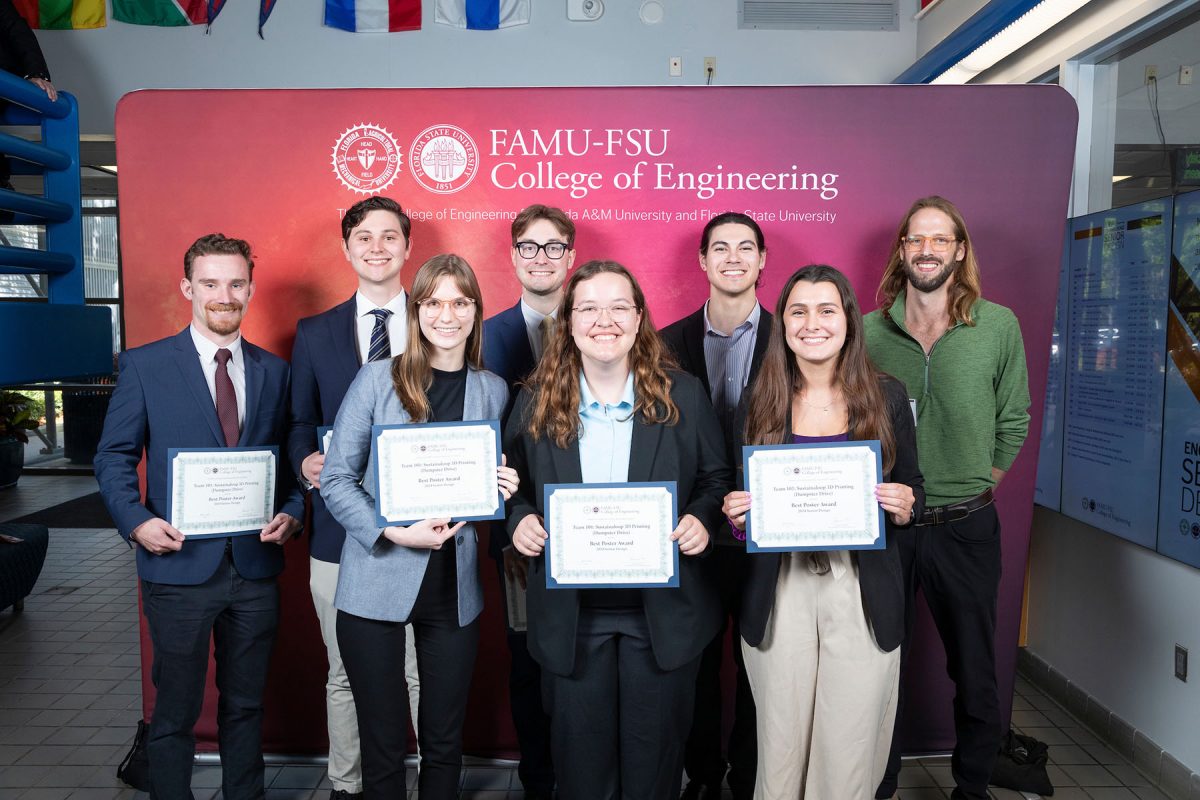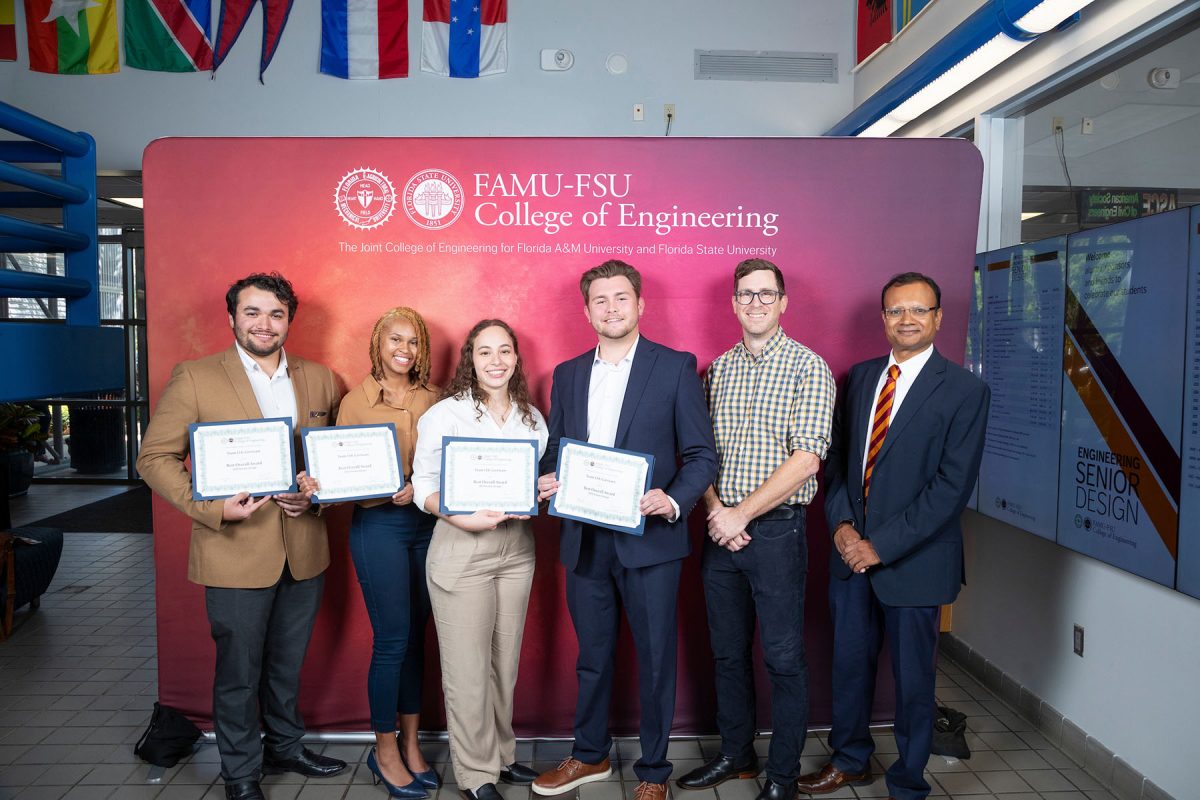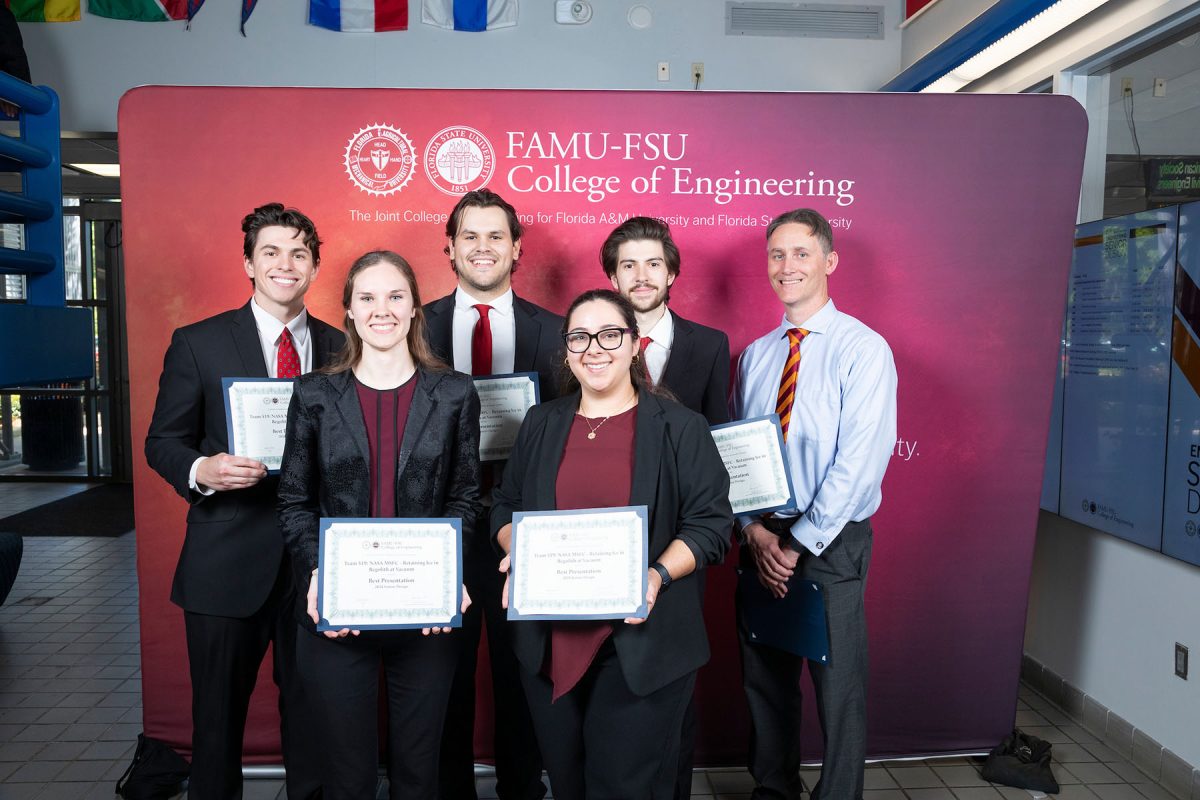The FAMU-FSU College of Engineering held its 41st annual Engineering Senior Design Day Thursday, April 4, an annual showcase for students to present the projects they’ve worked on over the past two semesters.
“Senior Design is always one of our most anticipated events of the year,” said Suvranu De, dean of the college. “The capstone project is the fulfillment of an engineering education, and we are so proud of all our students have learned and accomplished. The projects are sponsored by industry and alumni engineers who are also an important part of this process, and having them on our campus for this event makes it even more special for us all.”
Students were given a problem to solve in teams and worked with faculty and sponsor representatives over the past year as they developed prototypes for the showcase.
“Senior Design is always one of our most anticipated events of the year. The capstone project is the fulfillment of an engineering education, and we are so proud of all our students have learned and accomplished.”
— Suvranu De, dean of the FAMU-FSU College of Engineering
“It really goes across the entire spectrum of engineering,” said Tisha Keller, director of marketing and communications for the college. “These projects can be anything from designing a high-performance fabric to reworking a traffic light at an intersection.”
One group evaluated the possibility of lunar regolith, or moon soil, as an additive manufacturing material for moon habitation. The team explored the viability of using moon soil as an extraterrestrial concrete replacement to build infrastructure on the moon.
“It currently costs $75,000 to transport 1 kilogram of material to the moon with the Artemis Space Launch System, and it would cost approximately $35 billion to build and maintain a lunar colony,” said Isabelle Scheffer, a senior majoring in industrial engineering. “The goal of our project is to use the resources already available on the moon to solve that problem.”
The team is sponsored by NASA’s Marshall Space Flight Center.
“Talking and collaborating with those NASA researchers has been super cool because it feels like we are a part of that big mission as opposed to feeling like just another school project,” Scheffler said.
Another team’s project, “Catheter Tortional Displacement Testing Rig,” is a tool used to test the safety and effectiveness of catheters used in the surgical treatment of heart arrhythmia.
“Essentially, this prototype replicates the conditions of the heart,” said Lauren Kazzab, a senior majoring in biomedical engineering. “We want consistency; we want anyone to take this device, insert the catheter and get the same result.”
The group was sponsored by Biosense Webster, a Johnson & Johnson company.
“We’ve met with our sponsors weekly since the beginning of last semester where they taught us about heart catheters and how they’re used in surgery,” said Zachary Leachman, a senior majoring in biomedical engineering. “They were very available, super helpful and overall, working with them was a great experience.”
The team’s project is a meaningful step in the pursuit of safe and effective surgery.
“Putting these projects together is a lot of fun, and this particular one has a lot of applicability,” said Charles Lindholm, senior director of regional business at Johnson & Johnson. “We use these things in the operating room every day, so it’s important to understand how they perform and whether that repeatability can transfer from catheter to catheter.”
The group’s hard work was made easier and more meaningful by the personal investment of some of its members.
“Two members of this eight-person team have had this surgery before, so it was really nice to be able to work on something that they had a personal connection with,” Kazzab said.
For more information, visit eng.famu.fsu.edu.







